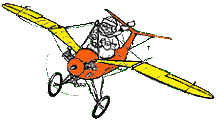
What is a Light Sport Aircraft?


Special FAA certification class (LSA) for an aircraft other than a helicopter or powered-lift that, since its original certification, has continued to meet the following criteria:

• Maximum take-off weight of not more than (1) 660# (300kgs) for lighter-than-air craft; (2) 1,320# (600kgs) for aircraft not for operation on water; (3) 1,430# (650kgs) for an aircraft for operation on water or a glider.

• Maximum airspeed in level flight with maximum continuous power (Vh) of not more than 120 kts (138.1 mph) CAS under standard atmospheric conditions at sea level.

• Maximum never-exceed speed (VNE) of not more than 120 kts (138.1 mph) CAS for a glider.

• Maximum stalling speed or minimum steady-flight speed without the use of lift-enhancing devices (VS1) of not more than 45 kts (51.8 mph) CAS at the aircraft's maximum certificated takeoff weight and most critical center of gravity.

• Maximum seating capacity of no more than two persons, including pilot.

• A single, reciprocating engine, if powered.

• A fixed or ground-adjustable propeller if a powered aircraft other than a powered glider.

• A fixed or auto-feathering propeller system if a powered glider.

• A fixed-pitch, semi-rigid, teetering, two-blade rotor system, if a gyroplane.

• A nonpressurized cabin, if equipped with a cabin.

• Fixed landing gear, except for an aircraft intended for operation on water or a glider.

• Fixed or repositionable landing gear, or a hull, for an aircraft intended for operation on water.

• Fixed or retractable landing gear for a glider.

• Powered parachute—a powered aircraft comprised of a flexible or semi-rigid wing connected to a fuselage so that the wing is not in position for flight until the aircraft is in motion. The fuselage of a powered parachute contains the aircraft engine, a seat for each occupant and is attached to the aircraft's landing gear.

• Weight-shift-control aircraft—a powered aircraft with a framed pivoting wing and a fuselage controllable only in pitch and roll by the pilot's ability to change the aircraft's center of gravity with respect to the wing. Flight control of the aircraft depends on the wing's ability to flexibly deform rather than the use of control surfaces.
What are requirements to be a Light Sport Pilot?
The FAA's Sport Pilot certificate is similar to other countries' ultralight certificates and is their only pilot certificate for powered aircraft that does not require a medical examination. A driver's license can be used as proof of medical competence.

To qualify as Sport Pilot in a single-engine land airplane you must:

• Be at least 17 years of age;

• Be able read, speak, write, and understand English;

• Log at least 20 hours of flight time of which, at least,

15 hrs must be dual instruction with a qualified flight instructor,

2 hrs must be cross-country dual instruction, and

5 hrs must be solo flight;

• Fly one solo cross-country over a total distance of 75 or more nautical miles to two different destinations to a full-stop landing. At least one leg of this cross-country must be over a total distance of at least 25 nautical miles;

• Have received 3 hrs of dual instruction in the preceding 60 days;

• Pass a written test;

• Pass a practical test,

Sport Pilots are only eligible to fly aircraft that are either certified specifically as Light Sport Aircraft (as described above), or were certified prior to the LSA regulations and are within their maximum weight and performance limitations.

Restrictions placed on a pilot exercising the privileges of a Sport Pilot certificate are:

• No more than one passenger;

• Daytime flight only (civil twilight is used to define day/night);

• No flight above 10,000 feet MSL;

• No flight in any of the airspace classes that require radio communication (classes A, B, C, or D) without first obtaining additional instruction and instructor endorsement;

• The Sport Pilot certificate is also ineligible for additional ratings (such as an Instrument rating), although time in sport-light aircraft can be used towards the experience requirement of other ratings on higher certificate types.
|

